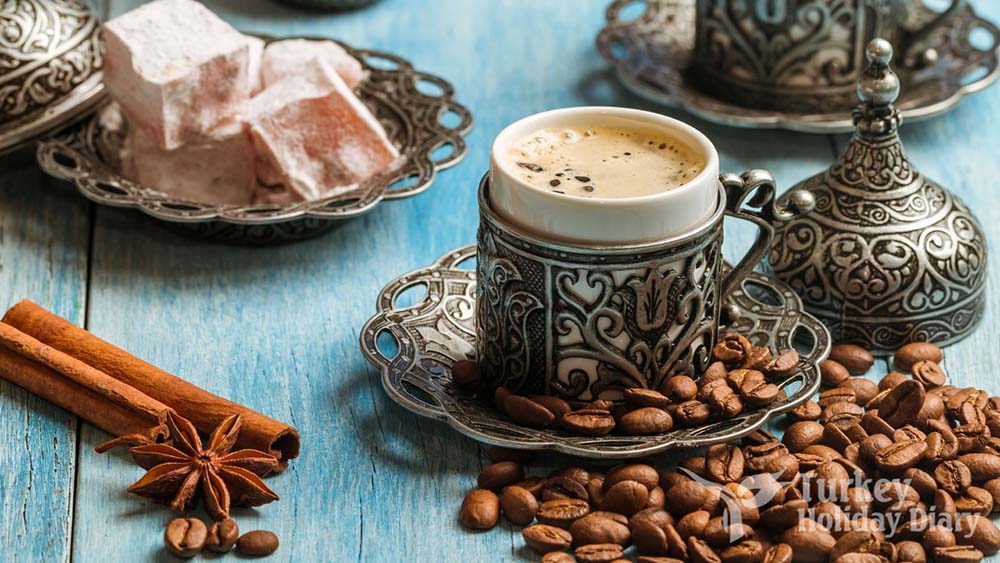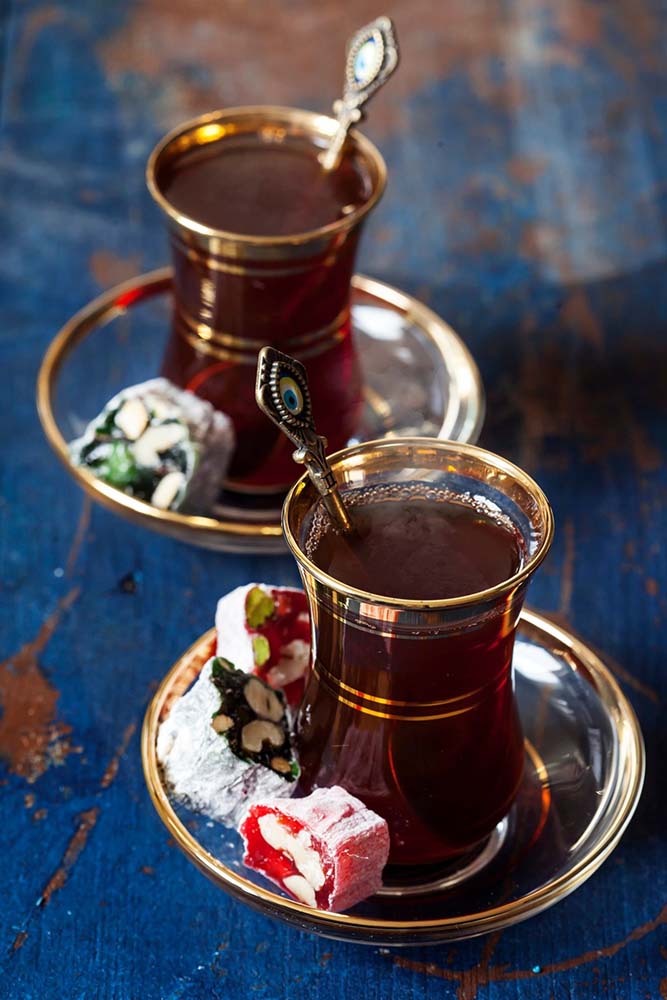The value of coffee and tea in human life cannot be underestimated. The plants that produce these commodities are not grown in every country, but it is known that tea was first used in China about 2000 years ago BC, and generally, British society is known for its tea. But the Turks also deserve credit! Turks have a Turkish tea culture that they have developed through the years. In order to survey this cultural delicacy, it is necessary to consider not only consumption but also production and export. When considering the tea producing countries in the world, Turkey clearly ranks among the top 5. Beyond that, Turkey satisfies approximately 10 percent of the demand for tea across the world.
Both tea and coffee are known for their strong and refreshing effect in Turkish culture. Tea came to our country at about the end of the 19th century, during the Ottoman period. The first serious attempt to craft tea was made by the Sultan Abdülhamid II period. After the Republic, tea production was extended under the name of state policy. Turkish tea, especially black tea, is grown in areas ranging from the Central Black Sea to the shores of the Eastern Black Sea. Tea enjoyment, known as Britain’s “high tea” starts in the morning in Turkey and tea can be consumed non-stop until evening. Tea treats are often presented as a token of friendship and courtesy.
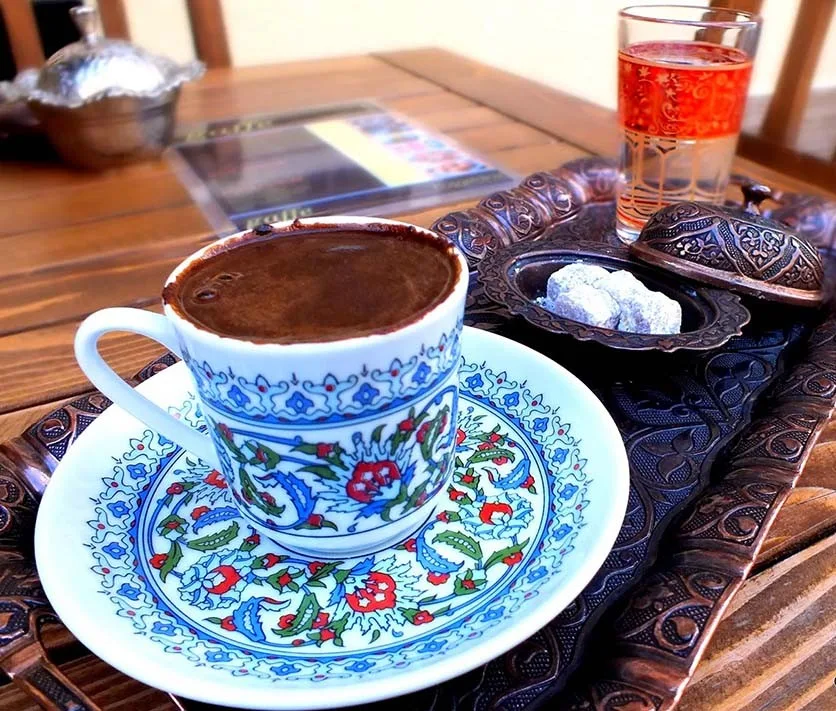
Tea styles vary across different cities. Tea is usually served in a light color and is brought without a spoon in Erzurum and surrounding cities. No spoon is needed because tea is consumed with a special sugar called as “kıtlama,” comes in a hard form. Dividing the sugar cubes can be difficult by hand but you can bite it, dissolve in your mouth and sip tea. Or some use a special pair of scissors. If a guest does not tell a host that it is enough, the treat will continue coming. When it is called Turkish tea, it is not served in a thick cup, but a thin one (we call it “Ajda”), so that one might enjoy the additional pleasures of the beverage’s color, its warmth, and even the sound from the cup itself.
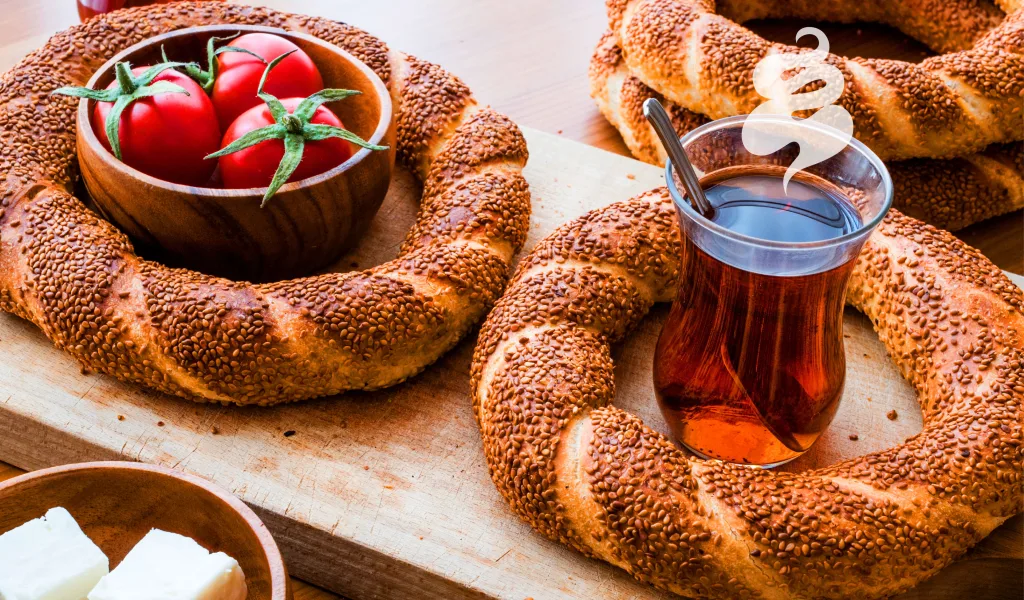
Why not try simit with tea?
In terms of tea production and consumption, Türkiye ranks among the top countries in the world. For its people, tea is an indispensable companion to breakfast, but even if you drink it with every meal, no one will find it unusual. To brew a tea so fragrant and flavorful that it makes you say, “Ah, that’s good!” with the first sip, there are a few key points to keep in mind. One of them is the material of the teapot. For a richer taste, enamel, ceramic, porcelain, or copper teapots are generally recommended.

Turkish tea is served in a tulip-shaped glass.
Another important tip is timing! Let the tea steep for about 20 minutes; if you cover the mouth of the teapot with a stopper during this time, you’ll get a well-brewed tea with a rich aroma. The key here is to ensure that while brewing, the water in the lower kettle is not boiling too vigorously, as excess steam can make the tea bitter. To prevent this, you should lower the heat while the tea is steeping.
When serving tea, pour the tea into the glass first, then add hot water, leaving a small space of about 1–2 centimeters at the top; known as the dudak payı (“lip allowance”). And to truly experience tea in its most authentic form, it is recommended to drink it from a traditional tulip-shaped glass.
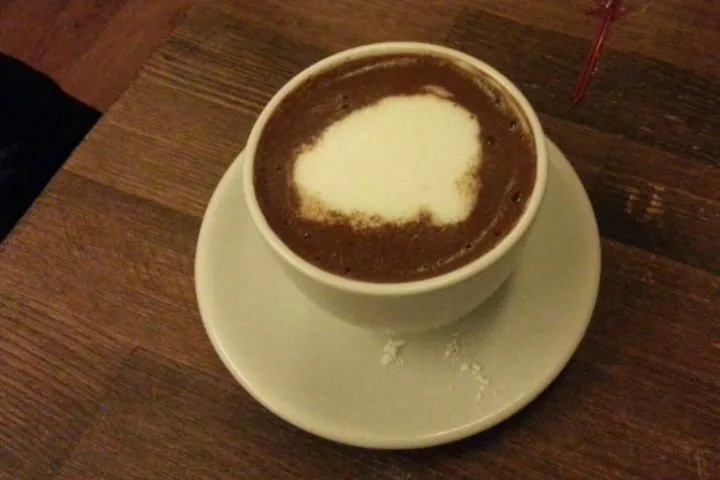
Tatar coffee, served with clotted cream
Coffee comes in a variety of tastes and cultures from all four corners of the world. Turkish coffee is different from other coffees, set apart by the grinding of the beans, the careful cooking, and presentation. Serving coffee is a pleasant ceremony in Turkey and our customs are recognized as an inseparable part of our cultural history. People who lived in the Ottoman Empire first introduced coffee in the 16th century, and since then, coffee has become an important part of social life, playing a big role in welcoming guests. According to our history, coffee is the most special habit of Turkish culture.
According to the methods discovered by the Turks, new pressing methods have emerged. It was enjoyed as Turkish coffee with cooking pots and jugs. The first coffee house was opened in Tahtakale in 1554. Then the beverage was shared among the people. Raw coffee beans are roasted in a frying pan. Then the beans are pounded in the mortar and cooked in pots. Over time, the cups have begun to accompany this historical adventure of the Turkish coffee. The first cups were designed with wood engraving. Later, they were made from porcelain and introduced to the whole world as a Turkish coffee cup.
Coffee’s fame also reached the palace harems such that concubines took coffee pressing lessons, as this trade was known to be difficult to master.
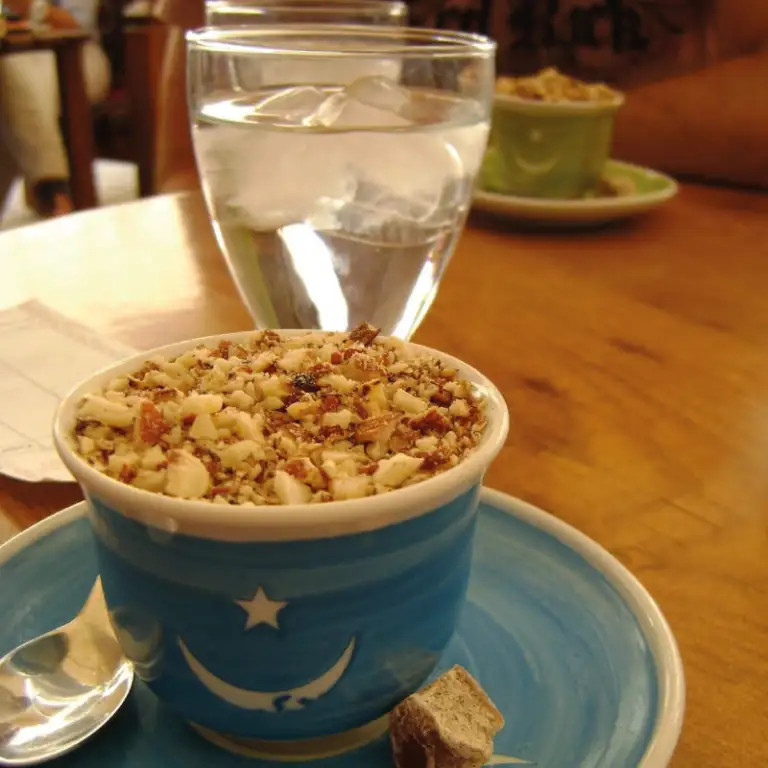
Cilveli coffee is an indispensable part of traditional marriage proposal ceremonies in Manisa.
Today, we have three kinds of coffee: with a little sugar, well-sugared, and with medium sugar. In the past, though, there were 40 kinds of coffee. Important hours of day can also be marked for drinking Turkish coffee. Generally, it was preferred to drink coffee in the morning or at noon. Our first meal of day, “kahvaltı” (breakfast), translates literally to “meal before coffee.”
Turkish coffee has some rituals. For example, one should cook Turkish coffee with foam if you want it to present well. Turkish coffee is indispensable in leisure time, since it is thought that if one drinks coffee after work, he or she will feel relaxed.
Most importantly, it is traditional to the practice of asking for a girl’s hand in marriage. On this important day, salt can be added to the coffee, which is kind of a traditional joke. The groom who drinks salty coffee is believed to be accepting all kinds of difficulties with this action. After drinking the coffee, the cup is turned upside down and left to cool. This symbolizes fortune-telling and this trick is also widely used throughout Turkish society. We also have a proverb that “one cup of coffee has memories for forty years”, which means you will not forget the time enjoyed with a good company and Turkish coffee for a long time. Rituals like these bring people together, thus, Turkish coffee has been taking center stage in our lives for many reasons.
While visiting Turkey, you can try a variety of unique Turkish coffee types served in different ways:
- Menengiç Coffee is made from the fruits of the menengiç plant, which grows especially in Siirt and Mardin. The berries, which turn from red to green as they ripen, are harvested, dried, then roasted; resulting in a smooth, mild coffee known as menengiç.
- Dibek Coffee, best enjoyed in the Aegean Region, is distinguished by its grinding method. Instead of being ground, the coffee is pounded in hollow stone mortars called dibek, giving it a thick consistency while remaining remarkably smooth to drink.
- Mastic-Flavored Turkish Coffee is an aromatic variety where the scent of coffee competes with the sweet fragrance of mastic. As you may know, mastic is a resin obtained from the trunk of the mastic tree, dried in the sun, and used in various culinary applications. One of its finest pairings is undoubtedly with Turkish coffee.
- Mırra, a traditional coffee of Southeastern Anatolia, is brewed by steeping classic Turkish coffee beans multiple times in special coffee pots called güğüm. Served in handleless cups with only a few sips per serving, mırra is known for its intensely bitter and strong flavor. Its name derives from the Arabic word murr, meaning “bitter.”
- Tatar Coffee is made by placing two or three teaspoons of clotted cream (kaymak) on top of Turkish coffee. Another distinctive aspect of Tatar coffee is its presentation; it must be served before meals and in a cup called a tostakay, which is larger than a typical coffee cup.
- Süvari Coffee, though also consumed in the Aegean, is especially popular in Adana and Mersin. This dark, strong roast is served in slim-waisted tea glasses. In Adana, it is also known as gar coffee.
- Hatay Coffee is known for its bold, intense flavor, thanks to a double roasting of the coffee beans. Its aroma is so strong, you can smell it from several streets away. Of course, the best place to try it is in Hatay itself.
- Cilveli Coffee, a specialty of Manisa, delights with its presentation alone. Ground almonds are sprinkled on top of the foamy surface and it’s served with a dessert spoon. The reason the almonds stay afloat is the use of double-roasted coffee beans.

Süvari Coffee is served in a traditional Turkish tea cup

